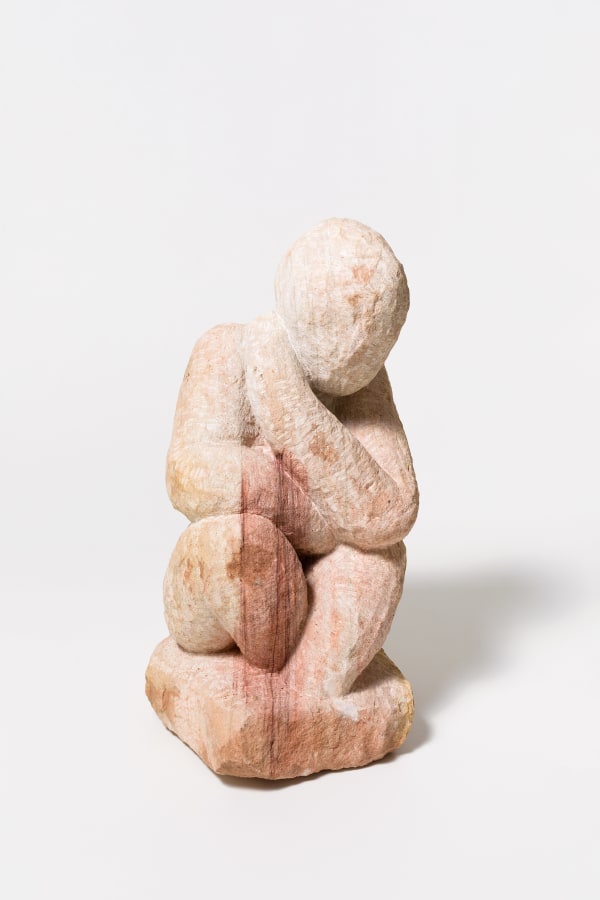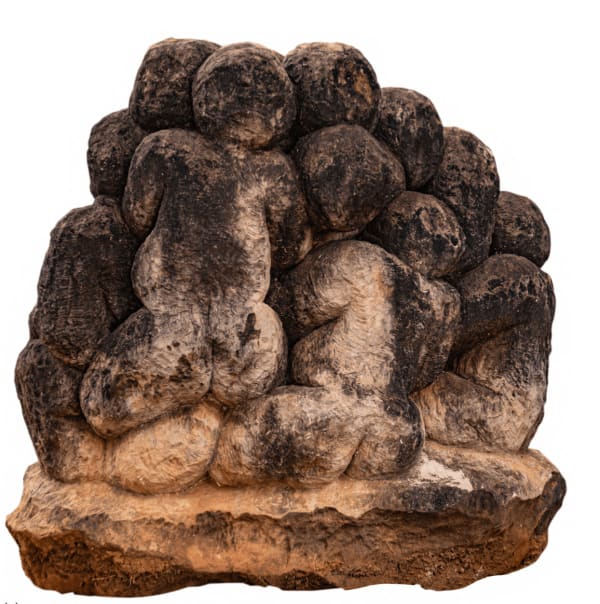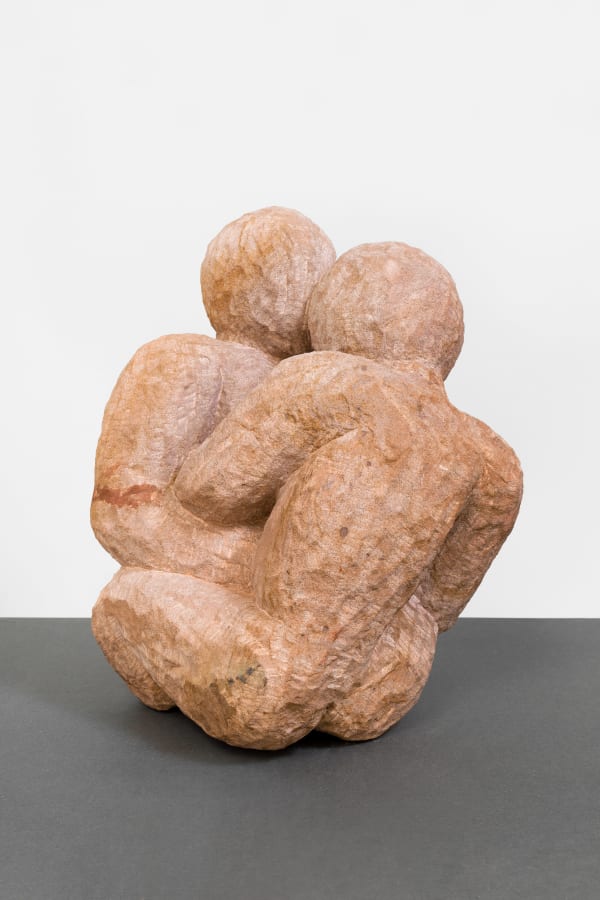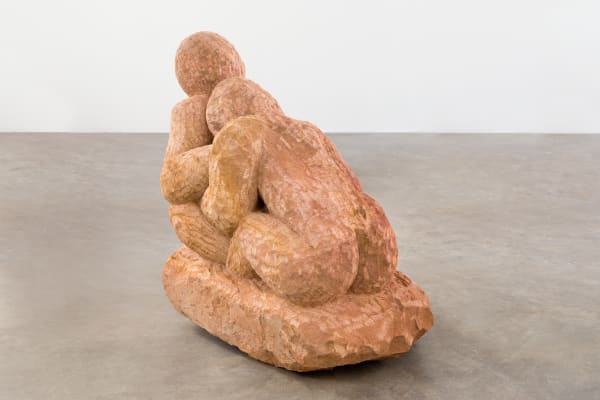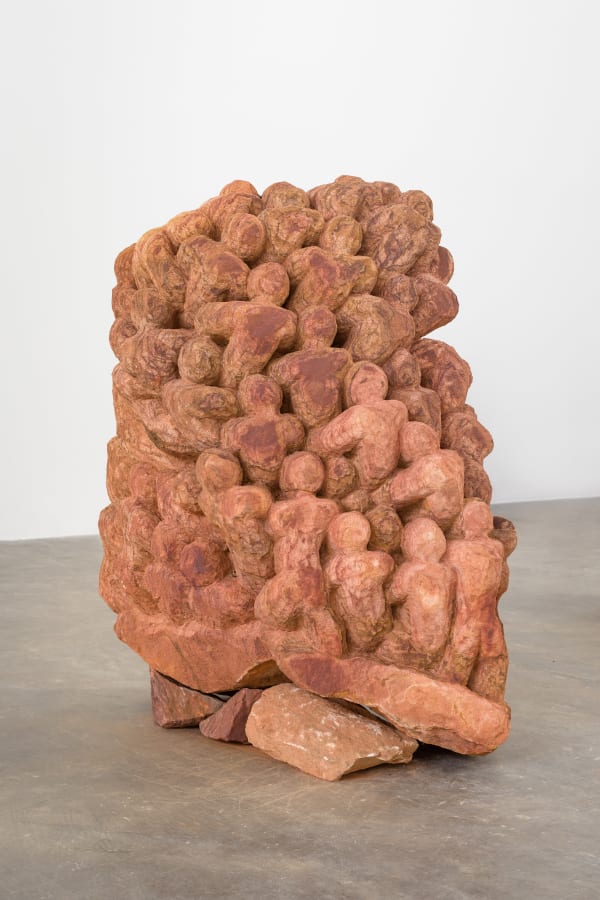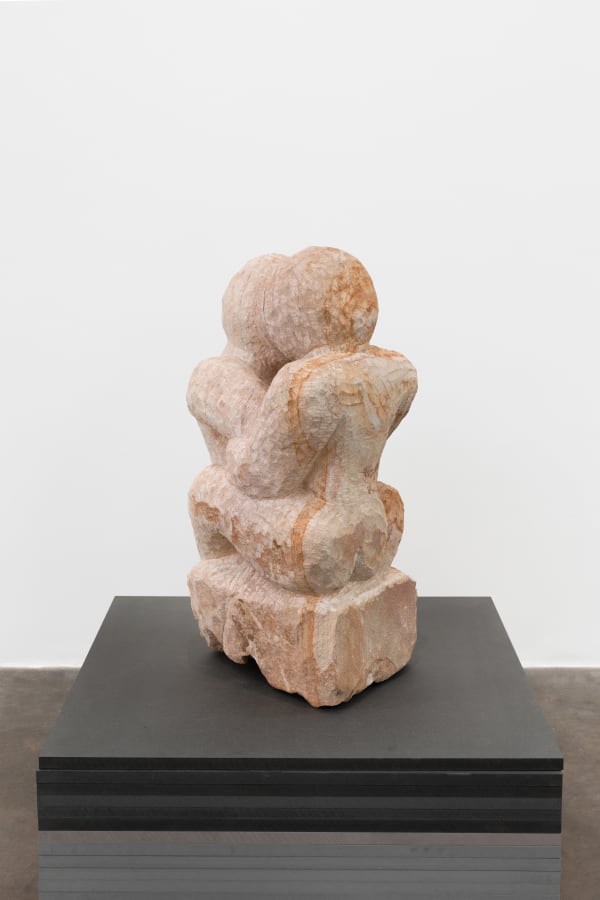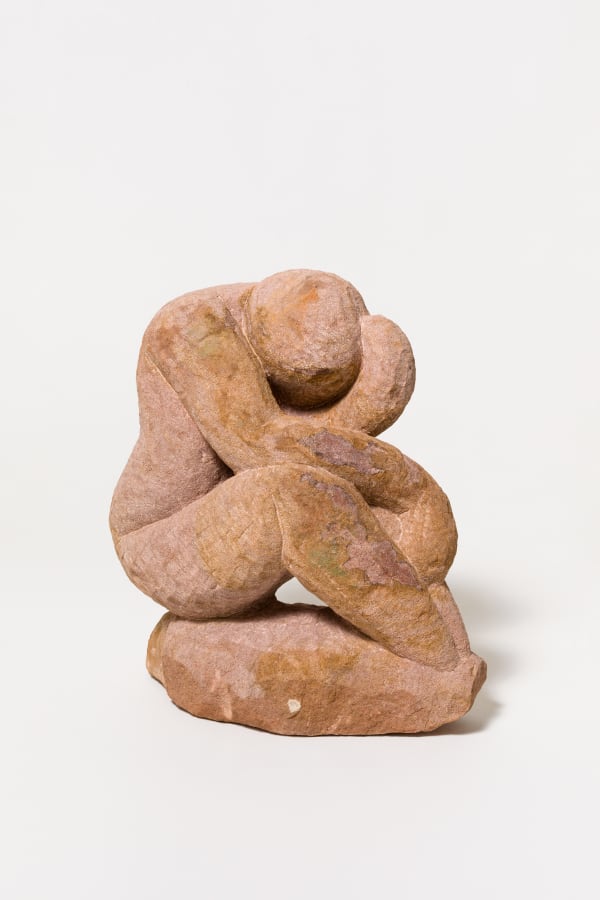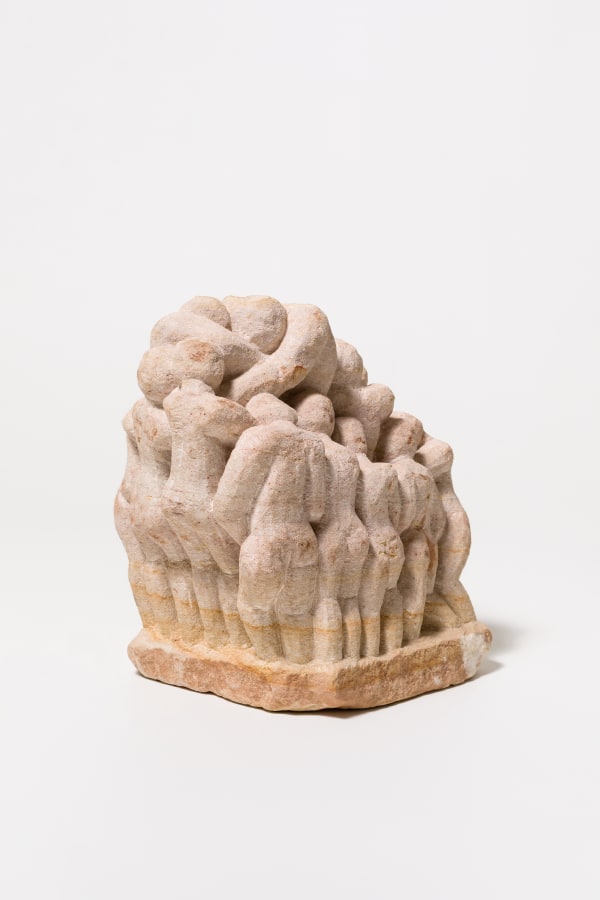After the Stone Paulo Pires
The gravity of the carved matter calls us forth. The sculpted stone sets its magnetic field via a sensitive thread between its primordial condition and the artist’s action. Revealed before our eyes, the forms allow us to see bodies and movements in a singular ecology of minor gestures: an introspective individual, two people fighting for space, another two exchanging affection, an endless cluster of people… These are, however, less representative than suggestive; less of a narrative definition and more of a treaty on our ability to freely create and perform history through our exchanges with the environment.
Paulo Pires works his sandstone to the limits of its condition, between its organic state and material evocation. His practice begins with listening, a profound and reverent mode of listening: first, his stones must be ‘shouting’, that is, ready to show a path of expression, and then it is their original constitution that guides the carving. This imposed ethics and the two-way process of energy transfer between raw-matter and artist allows new possibilities to emerge. This intense method relies on an attentive intuition, on a touch that senses, on bathing in water that softens and, ultimately, on a precise cut that introduces ideas to the telluric element. The point of contact between hand and substance creates channels for the transposition of emotions from creator to creature and vice-versa.
In this spiritual, physical and dialectical game, the artist’s greatest reference is raw-matter itself; the input and the subject, the object and the metaphor. Corporeal formations emerge from a fine ambiguous line between figure and abstraction, hardness and flexibility, inertia and transformation. Ready to rise up or to collapse at any second, the situations to which they invite the spectator can only be dynamic. They provoke those who approach them, rotating their senses, forging different experiences from each point of view.
When moving around the stone circuit, the mono-theme does not hinder the plurality of meaning and relation. It is possible to experience a spectrum that goes from magma and minerals appearing on the Earth’s crust to the imagination of craftspeople from all times. Thus, we glimpse hills, labyrinths and cliffs; the first marks on the walls of caves and on the base of gorges; the Olympic colossus and the myth of the golem; the enterprises of modern sculptors and their search for synthesis in the interpretation of history; and complex contemporary emergencies. By animating the inanimate, his inventions deal with great universal issues and the tradition of sculpture, as well as with the artist’s personal experience, his biography, memory, and above all, the free arrangements of his vision.
It is in such a way that the journey set by Paulo Pires’ practice spreads over from personal stance to collective struggle, from individual loneliness to love stories. In his anthropomorphic masses we see the emergence of anatomical positions, fundamental countenances, carnal desires, the eroticism of touch, unstoppable passions, the displacement of people, stone quarries and mines, collective hurrying and mass elbowing. With a very singular trace, the artist gives tonality to everyday intentions, revealing the current flows of subjectivities and the effects they mobilize on the surface. It is the sameness of the whole constituted by individual differences that defines the insurmountable weight of life but equally the elastic capacity of creation. We always see the same world but there are different – always renewed – ways of existing in it.
– Germano Dushá

